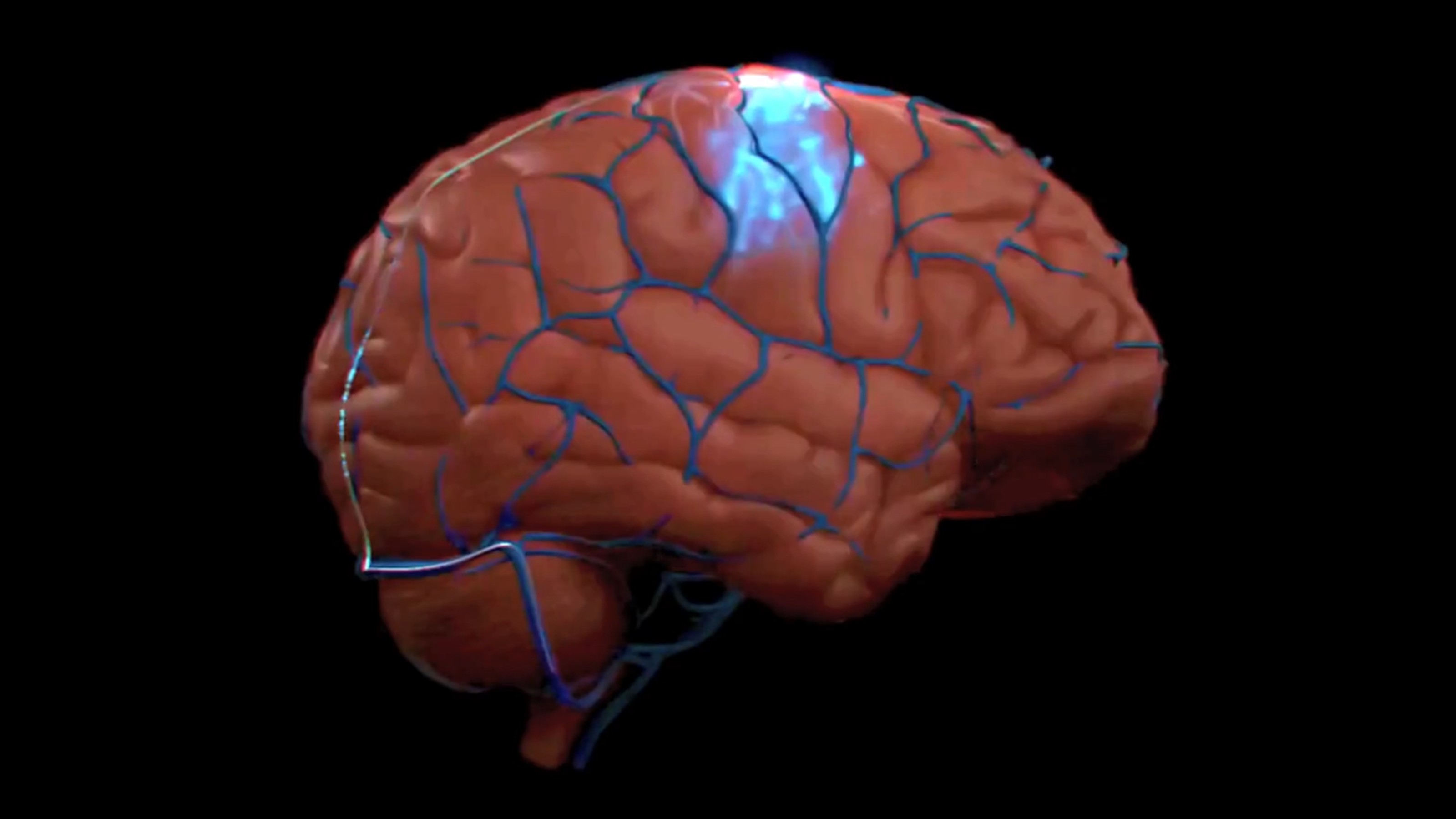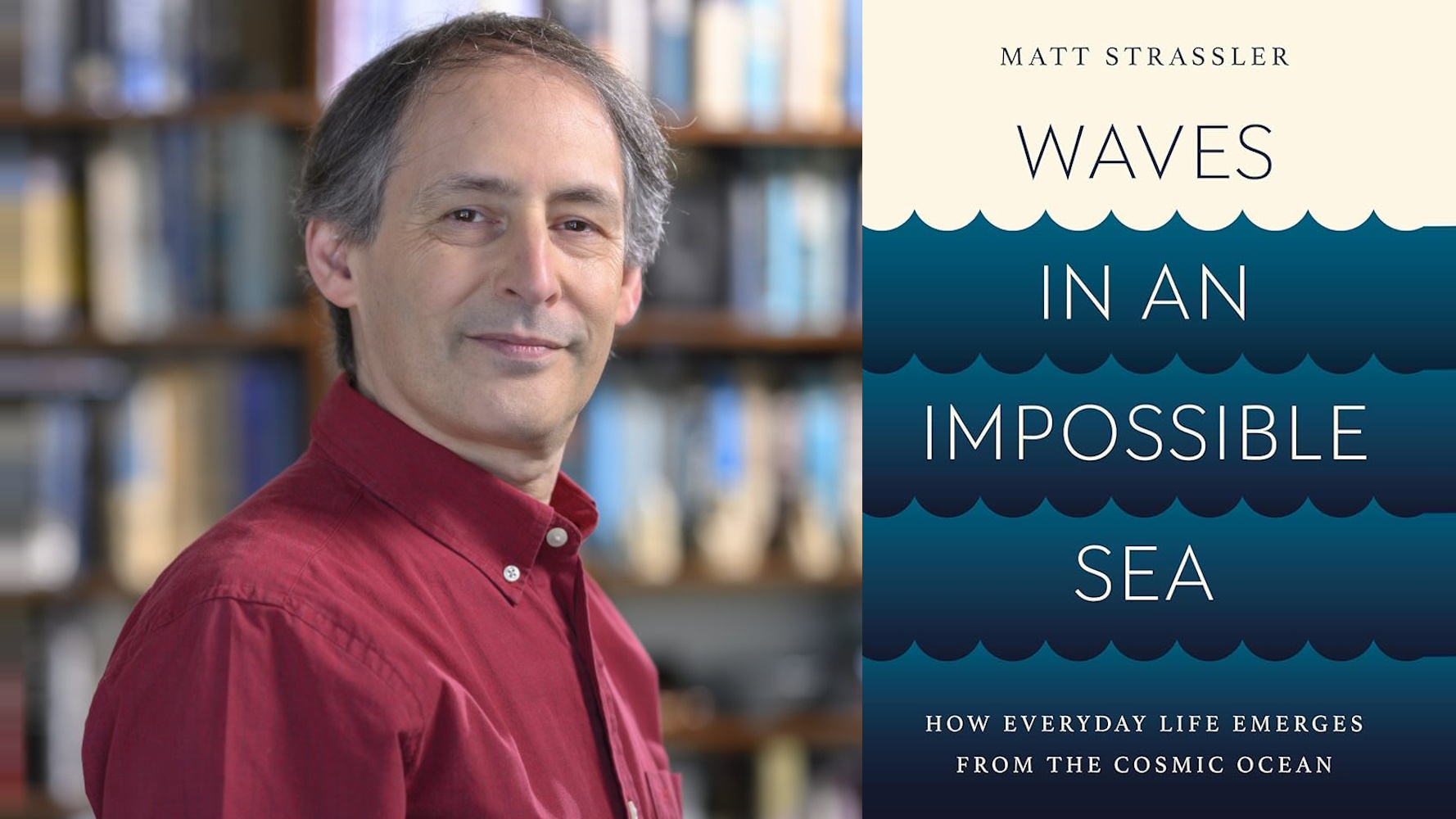An interview with the modernist designer and founder of Vignelli Associates.
rnrnrn
Massimo Vignelli: My name is Massimo Vignelli and I like tornbe known as a designer.
rnrnrnrnrnQuestion: How did you choose design as a career?
rnrnMassimo Vignelli: rnYes. I started to begin tornbe interested in architecture and design when I was 14 years old, which wasrnpretty early in life. And then Irnwould start to look at architectural magazines and I eventually went to thernschool of architecture too, but one of the things I learned very early is thatrnan architect should be able to design anything from a spoon to the city. That was a favorite phrase by Argo Flores, a Viennese architect around the turn of the century, the otherrncentury. And I was fascinated byrnthat idea and then I’ve seen that that is true and the great architects likernFlores and Hoffmann from Vienna, again were doing this kind of things. And since I was born and raised inrnMilan, architects in Milan, they were also doing all kinds of things. They were designing buildings andrnfurniture and interiors and exhibitions and so on.
rnrnThen I shared an apartment with Max Huber, a famous graphicrndesigner from Switzerland, and so I learned graphic design and I got fully inrnlove with graphic design. And so Irnwas doing the whole thing from graphics to architecture.
rnrnSo I built a house at one point for a client and then I didrnexhibitions and then I started to do products and you know, that's the way Irnstarted. And I like to try all therntime to try different materials, different experiences, I was eager to try allrnkinds of things and I suppose that attitude has a left me after a long, longrnlife of design anyhow. So that'srnhow I got interested in architecture and design. And naturally since I was very curious about the protagonistrnof the Modern movement in Europe at the time by the time I got to thernUniversity of Architecture I was about 20 years old, I had already met cursoryrnall the major architects in Europe from Le Corbusier, to you name it, all the others, country byrncountry, which was very exciting. rnYou know, I was a kind of a groupie I would say.
rnrnAnd of course, I was reading all of the books of them andrnabout what they had to say, and that gave me the critical strength or therncritical background to approach architecture and design.
rnrnQuestion: How much of your work takes place on, and off, therncomputer?
rnrnMassimo Vignelli: Well, when I started was a completelyrndifferent set of tools then than today. rnAnd I like to divide our profession into B.C. and A.C., just likernhistory. So B.C. is BeforernComputer, A.C. is After the Computer. rnSo before the computer was extremely and intensively manual. So of course I grew up with arnpencil. A pencil was my computerrnat the time and so drawing,rndrawing, drawing and the tools of drawing where the usual ones and eventuallyrnthen you graduated from the tools when the work increases and you start to drawrnby freehand as precise as possible and as accurate as possible, and I was prettyrngood at that. So, for me one inchrnwas a particular length, you know, but in centimeters or inches, which is kind of important toornbecause it gives you a very good sense of dimension and therefore a good sensernof scale. Scale is extremelyrnimportant, you know. Scale is notrndimensions. Dimensions arernphysical and scales are mental. rnAnd so without a knowledge of one, you can’t get to the knowledge of thernsecond one in a sense.
rnrnThen, there was a lot of glue, a lot of other materials, yournknow, pasting up and specifying type and losing type and was a very long andrntedious process, Photostat machines and paste up again. Oh god, what a life. I spend two-thirds of my life on nothing,rnin a sense.
rnrnThen all of a sudden God sent this incredible thing, whichrnis the computer, that’s the – it’s like God sending Jesus Christ, it’s thatrnkind of a thing. I don’t believernin one or the other, but I can believe in the computer. And so that was the greatrnredeemer. So throw away all otherrnkinds of tools and all of a sudden you could do things that were taking a longrntime to do, all of a sudden you can do it and you can see while you’re doingrnit. So that is a very, very, veryrnexciting thing. Not only that, butrnyou could do things better than ever in history. You can also do things worse than in history, all therntime. Most people do worse thingsrnthan ever. But good guys then makernbetter things than ever. And sornthat is a great tool to work. Andrnthis is what we use all the time.
rnrnNow, since I’m medieval, as you can see, then I still use myrnpencil, and I use the computer mostly for email and writing and things likernthat, and Googling, and blah, blah, blah, and checking the words, as you canrnimagine. Not being my firstrnlanguage, I have to check spelling all the time. And then I have people working with me which are veryrnliterate in the computer and so I can work behind them and say a little bigger,rna little smaller, yeah, like this, yeah this is good, this is better. Yeah, try this, try that. It’s that kind of operation, which isrnvery funny in a sense. You cannotrnplay the piano by telling a pianist what to do, go a little more to the left orrnto the right. And the same is forrnthe computer, really. You have tornplay yourself to get the most out of it. rnBut you know, and it takes a long time to learn too. So, I don’t think I have the time in myrnhead to really use it in a good way.
rnrnQuestion: Is there anything the computer can’t do for arndesigner?
rnrnMassimo Vignelli: Yeah, the computer is really like arnpencil, you know. It used tornbe. The pencil can do anything yournwant to, but you have to do it, and the same is with the computer. It can dornanything you want, but you have to do it. rnIt’s a tool. And when itrngoes by itself, it’s a disaster because it’s a very seductive kind ofrntool. The pencil you leave itrnthere, and it’s dead. It doesn’trndo anything and it doesn’t move by itself. It doesn’t offer anything; it’s totally submissive tornyou. The computer needs...even byrnaccident, offers incredible beautiful things that are very seductive. And if you forget about, or if yourndon’t have an idea to begin with, it is very easy to be seduced and that is notrna good use of the computer. Yournknow? So, that is the way it goes.
rnrnQuestion: What makes a design work?
rnrnMassimo Vignelli: Well, it should be visually powerful inrnthe sense that I do not like design that is a flat tire, that has no tension,rnthat has no guts, that has no expression. rnThis doesn’t mean to be **** like this, it could be on the contrary,rnextremely elegant. And by that Irnmean, intellectually elegant. Notrnfashion elegant, not mores elegant, but intellectually elegant. That means a mind that has beenrncultivated and refined for quite a long time, you know. Reading the best kind of books andrnreally understanding how the mind can be sublime. And another way intellectual elegance is exactly thernopposite of intellectually vulgar, you know. And indeed, we are surrounded by a tremendous amountrnof vulgarity, therefore, it is a strive to – it is an effort to change thatrnkind of situation, but it is very exciting because you have a sense ofrnaccomplishment. You know. And of course, you like to talk aboutrnit, you like to convince people and tell people how to get away from vulgarrnsituations into something which is a little more elegant, a little morernrefined. And if you multiply,rnmultiply, multiply, then the world is beginning to get better. It takes you a long time.
rnrnThen the third thing is, people are fascinated withrntrends. You know, trends are inrnthe air, everybody likes to be trendy, to be up-to-date, you know. But what is up-to-date today is gonerntomorrow. And if you are arnresponsible kind of a designer, you cannot design things that tomorrow are norngood anymore. If you like cheatingrnwith your client and your public where you use it, whatever it might be. So, you like to design something thatrnis going to last a long time. Andrnso, you train yourself to be disciplined and you train yourself to stay awayrnfrom trends. And in a sense yournget automatically involving into the notion of timelessness, so it takes tornlast a long time. And my god, Irncan quote so many things. Let’srnsay American Airlines logo I’ve done. rnLook how many have been done since I done that one. I done that one 45 years ago, mayberneven 50 years ago, and it’s still there. rnIt’s the only one that’s never changed. And how you can change? How can you make it better? It’s very legible, there are no tricks, it’s half red, halfrnblue. What is more American thanrnthat? You give me one and I’llrntake a look. You know, the type isrna type that will last forever. Andrnit’s fine.
rnrnThere are so many, the Bloomingdale logo, or the New YorkrnSubway, or you know, I mean, plenty, plenty, plenty of things which are – andrnobjects that we have done, plates like the Heller plates. You know, generation after generationrngrew up by eating on those plates and they are still around today. Furniture that we have designed a longrntime ago are still there, and so on. rnSo, it is great to design things that stay a long time. They have a long staying power. And when you look at the antiques, one,rnthey have staying power. So, Irnkind of like the idea of designing things that in 100 years from now will bernlooked at with respect and not laughed about, in a sense.
rnrnQuestion: What aspects of contemporary design do yourndislike?
rnrnMassimo Vignelli: Well, vulgarity is a real ubiquitousrnthing. You know, vulgarities onrneverything. On clothing today morernthan ever is on printed matter, kind of toonish kind of things, balloons, evenrnthe subway map has all those balloons. rnI mean, that’s very low, literally. **** there’s no need. rnYou don't talk down to people, you talk up to people, you know. So instead most of the people -- mostrnof the manufacturers they tend to design things to sell they are morerninterested in the money side than anything else. And greed is really the religion of vulgarity. And it's that is that kind of greedyrnyou know that everybody seems to have. rnI mean, as part of the culture, more here than any other place to a certainrnextent. Maybe because it offersrnmore, maybe because there's more buying power in the people, who knows? I don't know why. But certainly is -- and you know whyrnelse because it's a very young country and hasn't had the time to sift what isrngood from what is bad. But likerneverything that is young it's fascinating.
rnrnQuestion: How did you create your iconic 1970s New York Cityrnsubway map?
rnrnMassimo Vignelli: Well, number one, we like to design thingsrnwhich we have done before. So wernhave a challenge to make it better. rnThe other thing, all the maps which were done at the time before our maprnwere **** to a certain extent, but we’re talking a different – they were tryingrnto be half geographic, half schematic, and so on, not a very clear idea. And so we started to took a precisernvery diagrammatic kind of an approach, a diagram based on a grade of 90 and 45rndegrees, like the London map which was very 1931. You know, a long time ago. And we just did it. rnEvery line had a color at the time, every station had a dot, no dot, nornstation, it’s very simple. Butrnvery simple however is a process of insisting, insisting, insisting until yournget just the essentials. And all therntrashy things are gone. And thatrnis a process that is typical of our modes operandi, I mean what we do all thatrntime sifting, sifting. Actually,rnI’m not a designer, I’m a sifter. rnI can sift everything, all the time. My sift level lines keep shaking all the time for everythingrnthat is around. And so that is thernway the – then in 1979, they changed their nomenclatures, so the map that wernhad then was no good anymore for use. rnAnd so recently we redesigned the map according to the newrnnomenclatures, so that’s what we have done and it’s kind of nice. There’s so many museums I can’t believernit. And I hope we will dornsomething with it soon. It’s arngood map.
rnrnBut most of the maps today, they are done this way, subwayrnmaps I mean, around the world. rnParis has done a new one like this some time ago. Berlin, you name it, every major cityrnuses diagrammatic map. It’s onlyrnNew York, which is kind of special, it still has this sort of a hybrid betweenrna map and a diagram, but not even a diagram and, not even a map, but however,rnthe problem with the existing map is too much information it is 5 pounds into arn1 pound bag. And no wonder itrnbreaks.
rnrnQuestion: What other New York City signage have you created?rn
rnrnMassimo Vignelli: Well, I mean we designed the signs for thernhistorical district, the historical streets you know. And why we did that, you see again, you have to be aware ofrnwhat is around. For instance, werncould have done a completely new and different sign, but that would have beenrnstupid. As a matter of factrnsomebody else did that kind of thing and I consider it a very stupid approachrnbecause then when it does it is who it adds to an already very busyrnclutter. So instead we took thernexisting signs and just change the color. rnYou know, so it's not so expensive that way, but also doesn't addrnanother layer to the already very busy urban clutter you know. So the problem of clutter is a big onernof course as a designer and sifting, sifting, we tried to sift out as much asrnpossible. And that kind of stuff.
rnrnQuestion: When you walk around New York, or the world, dornyou feel like you’ve designed the place?
rnrnMassimo Vignelli: Yeah. You know, you have to know that, like every good designer,rnyou’ll have a twin brother that is called ego. And I go around with my ego all the time. And you should see how happy he is whenrnhe goes around in a most far away kind of place and all of a sudden maybe arntruck that comes by with a logo that you have designed, or a book is on thernwindow of a store, or someplace has the furniture that you have designed, orrnthe airline that brings you there has that. So, it’s kind of funny. Yes, it is a lot of fun.
rnrnWhile it is a gratification, it’s a lifelongrngratification. But as I said, it’srnfrom my ego; to keep my ego happy. rnIf the ego is not happy, you are in deep trouble, you know that?
rnrnQuestion: Why have you argued against the proliferation ofrnnew fonts?
rnrnMassimo Vignelli: Well you know, you have to know a littlernbit more about the history of typography, or type, and how it came about. You know, it was invented at the end ofrnthe 1400’s, you know, the Guttenbergs, so to speak, and then for 200 or 300rnyears, it went with very few different type faces. You know, very elegant, and that’s it. Some publisher hadrnthe type and printer and publisher was all one thing. And there were very few also because it was very difficultrnto cut type, you know, it was cut by hand and not tools besides the chisels, sornto speak, and the type was this small, so it was a very refined kind ofrnoperation to do. And because itrnwas refined, it was quite elegant. There was no room for vulgarity to get intornit. So, the basic typefaces donernin those years like Garamond, like Baskerville and **** and so on, ****. They were quite elegant – very elegant,rnactually, typefaces.
rnrnThen the Industrial Revolution comes about and then you canrndo the type in an industrial way and with the help of machines, and so on andrnso forth. And then because you could do it, people start to do it. The foundry started to do more type andrntherefore they had to sell it, to offer it. And they found the right victim in the advertising people,rnwhich they thought that they should use a different typeface for everyrndifferent client. They should notrnhave two clients with the same type. rnGod. And so that went onrnand on and that became a business just wallpapers, you know, it became arnbusiness to make typefaces. Andrnthen because of that, you’ve got typeface designers, people who got into thernbusiness, they like it and the create nonsense type, things that were totallyrnuseless and things of that nature and on and on and on and on.
rnrnAnd so eventually, you understand, that the reason thatrnthere are a lot of typefaces is just because there’s a business, not arnneed. So, you begin to sift, sift,rnsift, sift, and you begin sifting to see which one are appropriate for one usernor another and basically, as you know, the typefaces are divided into tworncategories, which are called serif, the one with the feet, and sans serifrnwithout the feet, the straight one. rnAnd between one family and the other family you begin to pick out thernbest, and at the end when you pick out the best, you wind up with about a halfrna dozen, or a little more of typefaces. rnAnd those are good, those are good for everything. Each one of those families are veryrnlarge, you know, so they are of the same typeface you have are very thin orrnvery big, they are straight or italic, which inclined, and things likernthat. So yes, there are only arngood maybe a dozen. I’m veryrngenerous today since I think they – but there’s no more than a dozen, actuallyrnI don’t use much many more than three or four in my life. That is the thing.
rnrnHowever, exceptionally sometime I might use some otherrntoo. But not really much more thanrnthat a dozen of good typefaces and the rest you can really trash it from arndesign point of view. However,rnit’s a business that keeps a lot of people alive and what do you want to do,rnwhat would they do otherwise? So,rnlet them do type if they like it. rnThe only thing that is important to understand is when to use it andrnwhen not to use it, or what to use. rnAnd a good designer can come to it, you know. And they can really very well along with a fewrntypefaces. Every good designerrndoesn’t use more than a few typefaces and when they’re less good, the numberrnincrease. And if they’re worse,rnthen use all of them.
rnrnQuestion: Having starred in the documentary “Helvetica,”rnwere you surprised by its success?
rnrnMassimo Vignelli: Yeah, definitely, I was surprised andrnvery, very, very pleased too. Butrnit’s incredible by how many people really liked the movie. People that had nothing to do withrndesign, and how useful it has been. rnYou have no idea the amount of people that mentioned this movie to me,rneverywhere in the world. I gotrnemail from everywhere in the world talking about it. I don’t say many things.
rnrnIn the disc, if you get the disc, at the end there arernextras, which are better then the whole movie, really. It was terrific. So, if you get the disc is fun. Any how, what is clear you see,rnHelvetica was born in 1957, around that time, you know, 1955, for the very precisernreason I remember, before Helvetica, I was using similar typefaces and cuttingrntogether close, because we like the type to be closed. But typefaces, they came with shouldersrnat that time, and the great invention of Helvetica was to be make the shoulderrnvery, very tight so you could put the type – and it’s the only type that hadrnthat, that’s why.
rnrnWhen we had that type that we could do that; that was B.C.,rnBefore Computer. Now withrncomputer, you can even do that. You can do anything. But at the time, it had to be done by cutting. And so I lost a lot of type ****, a lotrnof letters by cutting and gluing and so on. But when Helvetica came about, that could be done fine andrnthat is why it was so successful. rnAnd I started to use it and use it and the more you use it the more yournlearn how to use it, it’s just like a piano, the more you play it, the more yournlearn how to play it and the better player you become. And so it is with the type. And it is a great typeface, it willrnlast forever. You know, there arernothers, some people like other variations of it. I’m happy with it. rnAnd I think it will last hundreds of years, you know. And there are people will write withrnthis. Along with the **** alongrnwith the Garamond, along with the few of the great classic typefaces. And that’s it, until we **** thosernfaces will be around, I guess.
rnrnQuestion: What is the distinction you make between dimensionrnand scale?
rnrnMassimo Vignelli: Dimension is a measurable thing, entity,rnyou know that long, six inches, 10 inches, 10 feet, whatever it might be. Scale is a mental – you can say that arnlounger has scale, a building has scale, or an object has scale, or a page, orrnwhatever if it’s just right. Arnscale is a relationship to the object and the space surrounding it. And that dialogue could be music, or itrncould be just noise. And that isrnwhy it is so important, the sense of scale. And the scale relates to everything. The thickness of a pipe, the thicknessrnof a leg of the furniture. Evenrncolor could have a scale. Let’srnsay that if you paint a building shocking pink, that has no scale, it is just arnhuge mistake, but it’s not in the scale of the city to have things likernthat. You know. So, not onlyrnbecause it’s not appropriate, not only because it’s offensive to thernenvironment, I mean but among them also because that quantity of that color inrnthe urban scale, is out of scale.
rnrnBut however, out of scale is also very fascinatingrnthing. One of the greatestrninventions of pop art was really to bring an object which was usually like thisrnto make it huge. Oldenburg wasrnreally the great artist that did the best with that notion, you know. I mean we need also, **** we made arnline of cosmetics in the shape of nuts and bolts and screws and things likernthat by just taking a real thing and making it big. The change in scale is a surprise sometimes that could bernused in a good way, but again, you have to measure it and it should bernappropriate. Appropriateness isrnnot a very important issue, you know, the notion of appropriateness. That means to design things which arernright for that destination, and not for another one. And so when we start, we always look for what is specificrnfor that particular problem so that we can design in a most appropriate way asrnmuch as we can understand it, of course. rnBut appropriateness is important, discipline is important, and ambiguityrnis important.
rnrnAmbiguity is not – ambiguity for us Italians is a positivernthing. For the Anglo-Saxon it is arnnegative thing. You know. It’s a different culture. You know, you come up with a Vatican inrnyour pocket, ambiguity becomes very natural. But for us, ambiguity is plurality of meanings and that isrnwhy it is exciting. In thernAnglo-Saxon dictionary, so to speak, ambiguity instead has a negative connotationrnin the sense that ambiguity’s mellifluous, something that is neither here orrnthere. And for us instead **** isrna way of living. But it’srnimportant in design too because then it gives another level of richness sornthat, yes, it is that thing and if you read it in a slightly different way,rnmaybe it is something else too. rnAnd that might be – but it’s very, very dangerous as well. So, one has to train – it’s not forrneverybody.
rnrnQuestion: Are we currently in “postmodernism,”rn“post-postmodernism,” or “neo-modernism”?
rnrnMassimo Vignelli: I tell you, one of the greatest thingsrnabout postmodernism is that it’s gone. rnYou know. Postmodernism wasrnthe 15 minutes of celebrity for those that would have never had itrnotherwise. You know. When you think of Modernism asrnincredibly alive and just rooted in hundreds of years – in a sense, I thinkrnModernism started during the Renaissance somehow. But really, the Modernism is more, really started, I wouldrnsay, with the Enlightenment, you know, the Enlightenment, you know, 1750,rn1770s, 1750, you know, around that time. rnAlong with the Didierot and d'Alambert in a sense, with industrialization, basically thernfirst sounds of industrialization. rnAnd Modernism is alive and well and a great – while postmodernist isrngone, it has only one very good thing with it, is that somehow you restorerninterest in history. And that isrnvery important. History, theory,rnand criticism are the most important aspects in the development of design. But Modernism is alive and well, as Irnsay, and a lot of the young people are now working along the Modernistrnway. And there is no morernpost-modernism around, it’s really gone, gone, gone, gone, thank God.
rnrnBut, of course, it’s not a style. What is in style is a bad thing. Modernism is an attitude, it’s not a style. Modernism is a discipline, not arnstyle. Modernism is intelligent,rnnot a style. And so, when you workrnalong those lines, you are a Modernist designer, and that is what is good aboutrnit.
rnrnSo that will last forever, by the way.
rnrnQuestion: What was Le Corbusier like?
rnrnMassimo Vignelli: Well, we were lucky enough to meet all therngreat masters of architecture and design from Le Corbusier to Mies van derrnRohe, from Alvar Aalto to Charles Eames, and it is nice to know them. And if you aren’t stupid, they like yourntoo. And parties, you know. Anyhow, Le Corbusier was well, was Godrnat the time, you could imagine. Irnremember one time, we were traveling from Milan to Venice on a train, he wasrngoing to give a lecture in Venice, and he was traveling with a friend of mine, anrnarchitect friend, a very important architect at the time, and so, I couldrnresist, I went to the same compartment where they were, you known, and I wasrndoing an architectural magazine at the time, so just like you, I was veryrninterested in interviewing the great master, you know. And I remember at one point he said, whenrnI was sitting next to Le Corbusier, and he said, “Wow, this young man has a lotrnof heat.” It was summer. Maybe we were tight together, but hernmeant it as a kind of a – well, it was fun. And I have stories about every one of those bigrnmasters.
rnrnOne night we had dinner, we had several dinners in Chicagornwith Mies van der Rohe because I was teaching at the Institute of Design inrnChicago. And again, very excitingrnstories, I mean, he was a great storyteller, he would tell stories over thernBarcelona Pavilion, how it came about and all the things that happened duringrnthe construction and a thousand of antidotes from every one of them. And it was fun. So, you know, as I say, I was arngroupie, so this is why I am never annoyed when wherever I go to give lecturesrnand I see youngsters coming around, you know they want a signature. And I understand that, I mean, I wasrndoing the same thing. So, it’srnfine. I am not annoyed by that atrnall. And I’m glad actually, I’mrnglad they have some examples, somebody in their mind that is, you know is arnmentor. I mean, at the end of thernday, that is the most gratifying thing.
rnrnrnrnrn




